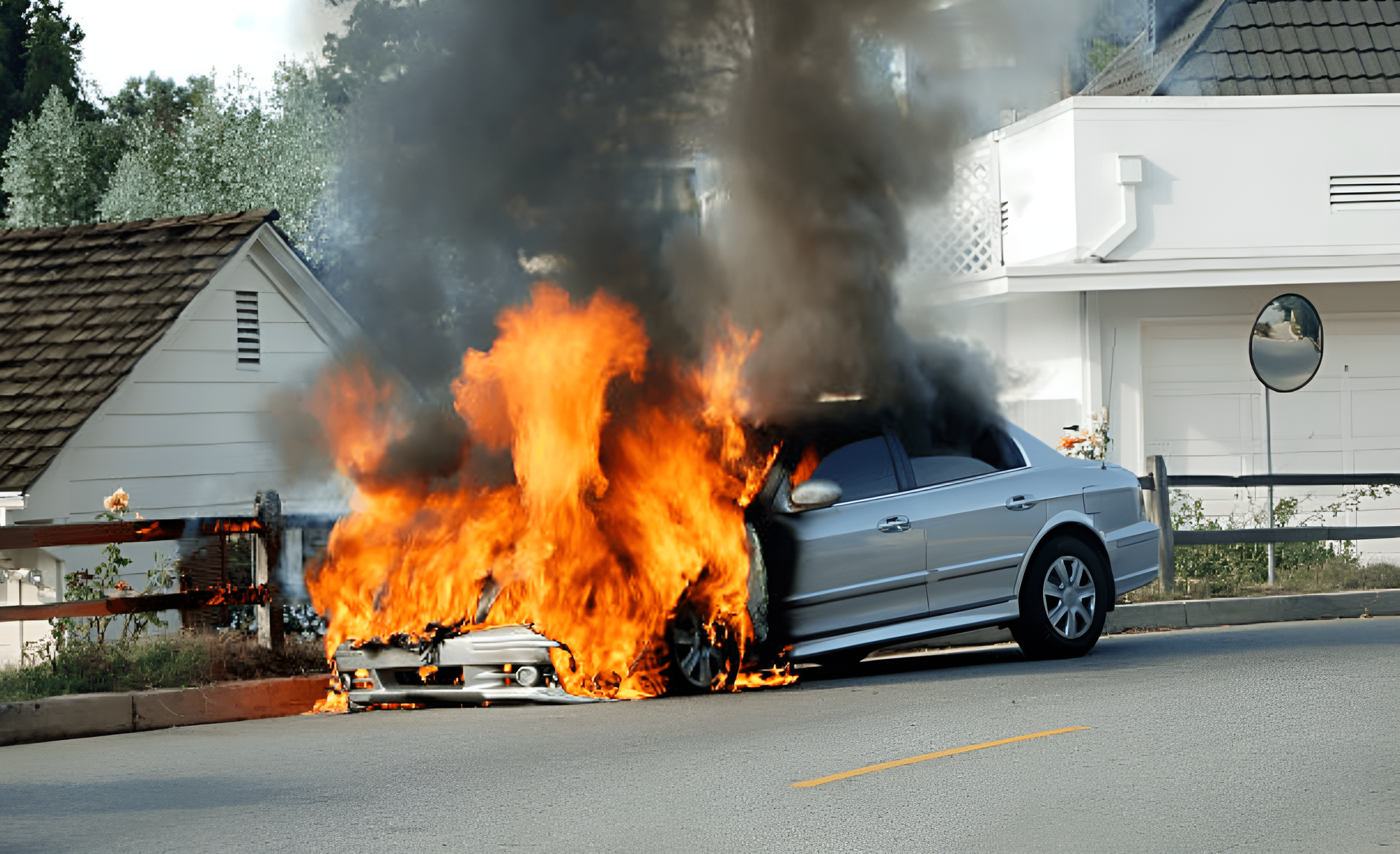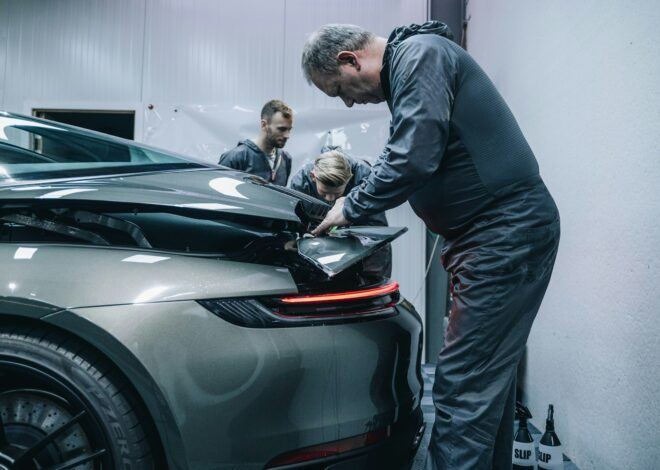
How To Blast Proof Your Car
Welcome to our step-by-step guide on how to blast proof your car. In a world where safety on the road is more crucial than ever, it’s time to think beyond traditional car security measures. Imagine cruising through your day-to-day life in a vehicle that not only gets you from point A to B but also protects you from unexpected threats.
This is where blast proofing (explosion protection) comes into play—a concept often reserved for military applications and high-security environments now making its way into civilian vehicles. As we navigate our lives amid uncertain times, understanding how to blast proof your car can be an empowering step towards ensuring your personal safety.
Whether you’re concerned about potential blasts or just want peace of mind while driving, this guide provides essential insights and practical tips to bolster your vehicle’s defenses. From selecting the right materials to implementing effective modifications, let’s delve into what it takes to transform your ordinary ride into a fortress on wheels.
What is Blast Proofing?
Blast proofing refers to the process of enhancing a vehicle’s resilience against explosive blasts. This technique is crucial for those who may find themselves in high-risk situations, such as security personnel or individuals in conflict zones.
The main goal of blast proofing is to protect both the occupants and the vehicle from shockwaves, shrapnel, and debris caused by explosions. This involves reinforcing various components of the car, making it more robust overall. Incorporating specialized materials can significantly reduce potential damage during an incident.
These upgrades aim not only to save lives but also to minimize injuries that could arise from sudden attacks or accidents. Effective blast proofing requires careful planning and expert knowledge. The right modifications can turn an ordinary car into a fortified refuge for its passengers in dangerous environments.
Understanding the Risks of Blasting Near Vehicles
Blasting near vehicles presents significant risks that are often underestimated. The force generated can easily damage not just the structure of a car but also its essential components. Flying debris is one of the main hazards. Shrapnel from explosives can strike with enough velocity to shatter windows and dent metal surfaces, creating dangerous situations for occupants inside.
Moreover, vibrations caused by blasting can affect vehicle stability. This instability may lead to control issues when navigating rough terrain or during emergency maneuvers. Another critical concern is exposure to hazardous materials released during the blast. Chemicals and particles could infiltrate air conditioning systems, posing health risks to anyone inside.
Awareness of these dangers is crucial for anyone operating in proximity to blasting zones. Proper precautions must always be taken to minimize potential harm while ensuring safety remains a priority at all times.
Tips for Blast Proofing Your Car
When it comes to blast proofing your car, the right approach can make all the difference. Begin by assessing your vehicle’s vulnerabilities. Identify weak spots in the frame and body that could benefit from extra reinforcement. Next, consider investing in specialized materials designed for ballistic protection.
These products are engineered to absorb impact while maintaining structural integrity. Don’t overlook your windows. Upgrading to bulletproof glass or applying high-performance window films can significantly enhance safety without compromising visibility. Another smart move is to equip your car with run-flat tires.
This ensures you remain mobile even after a direct hit, allowing for a quick escape if needed. Evaluate your suspension system. A robust setup will help manage added weight from protective modifications while improving overall stability on the road.
Choosing the Right Materials for Blast Proofing
When it comes to blast proofing your car, selecting the right materials is crucial. You want options that provide maximum protection without compromising performance. Start with high-strength steel or ballistic-grade aluminum for reinforcing the frame and body.
These materials can withstand significant impacts while remaining lightweight enough for daily use. Next, consider advanced polymer composites for added layers of defense. They offer excellent energy absorption and are often used in military applications due to their effectiveness. For windows, opt for multi-layered bulletproof glass combined with window films designed to resist shattering.
This combination enhances visibility while providing robust security against blasts. Don’t overlook tires; specialized run-flat tires paired with sealant will ensure mobility even after sustaining damage. Each material you choose plays a vital role in creating a safer driving experience during extreme situations.
Steps to Blast Proof Your Car:
Each step plays a vital role in enhancing your vehicle’s resilience against potential threats on the road. Attention to detail throughout this process is key for effective blast proofing.
A. Reinforcing the Frame and Body of the Car
Reinforcing the frame and body of your car is a critical step in blast proofing. A sturdy foundation increases resilience against blasts, ensuring better protection.
Start by inspecting existing welds and joints. Strengthening these areas with additional welding can provide extra security. Consider using high-strength steel or other lightweight materials that enhance durability without adding excessive weight.
You may also want to install side-impact beams in the doors for reinforced protection from explosive forces. These additions help absorb shock, redistributing it away from passengers inside.
Don’t overlook undercarriage enhancements either. Adding skid plates can shield vital components from debris, while reinforcing crossmembers improves overall structural integrity.
Every detail matters when it comes to maximizing safety on the road. The more robust your vehicle’s framework, the greater its chances of surviving extreme situations unscathed.
B. Adding Bulletproof Glass and Window Films
When it comes to enhancing your vehicle’s security, adding bulletproof glass and window films is a critical step. This upgrade can significantly improve your protection against various threats.
Bulletproof glass is composed of layers of polycarbonate or laminated materials. These layers absorb impact energy, making it much harder for projectiles to penetrate. It’s not just about defense; it’s also about clarity. Many modern options provide visibility comparable to standard windows.
Window films offer another layer of safety without the need for full replacement. They are designed to hold shattered glass in place and reduce glare while blocking harmful UV rays. Some films even enhance privacy, which adds an extra layer of stealth.
Choosing high-quality products from reputable manufacturers ensures maximum effectiveness. Proper installation is vital too—any gaps can compromise the whole system’s integrity, so professional help might be worth considering for this crucial enhancement.
C. Installing Run-Flat Tires and Tire Sealant
Run-flat tires are a game-changer for anyone looking to enhance vehicle safety. These specialized tires allow you to drive even when punctured, giving you peace of mind during emergencies. They contain reinforced sidewalls that support the weight of your car, enabling you to continue driving up to 50 miles at reduced speeds.
In addition to run-flat tires, consider using tire sealant. This product can seal minor punctures instantly and prevent air loss. Applying tire sealant provides an extra layer of security against unexpected flat tires while you’re on the road.
Both options combined create a robust defense against potential threats. By investing in these technologies, you’ll not only improve your car’s performance but also ensure safer journeys ahead.
D. Upgrading the Suspension System
Upgrading the suspension system is a crucial step in blast proofing your car. A robust suspension not only enhances stability but also absorbs shocks from blasts, keeping you safer on the road.
Consider investing in heavy-duty shock absorbers and springs that can withstand intense pressure. These components help manage weight distribution effectively during unexpected impacts.
Additionally, reinforced anti-roll bars can prevent body roll during sudden maneuvers. This added control allows for better handling when navigating away from danger zones.
Moreover, an upgraded suspension improves overall ride quality. You’ll experience less jarring when driving over rough terrain or uneven surfaces after an explosion occurs nearby.
Don’t forget to consult with professionals for proper installation and tuning of these systems. Their expertise ensures optimal performance tailored to your vehicle’s specific needs while enhancing safety measures significantly.
Additional Precautions for Maximum Protection
To enhance your car’s blast-proofing, consider adding additional safety features. Install a high-quality alarm system that includes motion sensors and GPS tracking. This will deter potential threats and help locate your vehicle if stolen.
Consider investing in reinforced door locks and secure storage compartments for valuables. These additions not only protect against blasts but also theft. Regular maintenance is key to ensuring all protective measures function effectively.
Schedule routine checks on the frame, glass, and tires to address any wear or damage promptly. Keep emergency supplies in your car at all times. A first aid kit, fire extinguisher, and communication device can be lifesavers during unexpected situations on the road.
Benefits of Blast Proofing Your Car
Blast proofing your car offers unparalleled safety. It significantly reduces the risk of injury from explosive blasts or projectiles. With reinforced materials, occupants feel more secure during potential threats. This added protection can be a lifesaver in high-risk environments.
Another benefit is increased vehicle durability. Blast-proofing enhances structural integrity, making your car more resilient against everyday wear and tear. Moreover, it can improve resale value. A well-protected vehicle may attract buyers looking for security features.
Insurance companies also recognize blast-proofed cars as lower risks, potentially leading to reduced premiums over time. In emergency situations, having a fortified vehicle allows quicker escape options and better maneuverability through dangerous areas.
Cost and Time Considerations
Blast proofing your car isn’t just about protection; it’s also an investment. Costs can vary widely based on the materials and methods you choose. For example, bulletproof glass is significantly more expensive than standard window film. You should consider labor costs as well.
Professional installation of reinforced frames or run-flat tires adds to the overall price tag. Make sure to budget for these additional expenses when planning your project. Time is another critical factor. Depending on how extensive the modifications are, expect the process to take anywhere from a few days to several weeks.
This timeline includes sourcing materials and completing installations. Prioritize quality over speed for maximum safety benefits. While it might be tempting to rush through, cutting corners can lead to compromised effectiveness in protection measures.
Conclusion: Ensuring Your Safety on the Road
Ensuring your safety on the road is paramount, especially in today’s unpredictable world. As you explore how to blast proof your car, consider the various strategies and materials discussed. Each step—from reinforcing the frame to upgrading your suspension—plays a critical role in enhancing protection against potential threats.
Investing time and resources into blast-proofing not only safeguards you but also adds peace of mind during your travels. Whether you’re frequently navigating high-risk areas or simply want an extra layer of security, these enhancements can make a significant difference.
Remember that safety begins with awareness and preparation. Equip yourself with knowledge about risks associated with blasting near vehicles, and take proactive measures to protect yourself effectively. Your vehicle should be more than just transportation; it should serve as a fortress on wheels when needed most.



